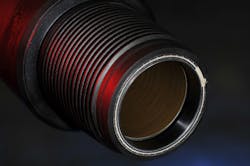Equinor steps up use of wired drill pipes
Offshore staff
STAVANGER, Norway – Equinor has awarded NOV and Schlumberger frame agreements for global deliveries of wired drill pipes, with a potential combined value of more than NKr1 billion ($117 million) during the first three years.
In both cases, these will involve solutions fromIntelliServ which is co-owned by the two contractors.
The Norwegian operator is intensifying use of wired drill pipe to acquire subsurface real-time data during drilling operations, in line with its digitalization and automated drilling plans.
In addition to the frame agreements, Equinor has committed to use wired drill pipe supplied by NOV for the Mariner field development in the UK’s East Shetland basin, theWest Hercules exploration drilling campaign offshore Norway, and the Transocean Enabler’s drilling program campaign on the Trestakk subsea project in the Norwegian Sea, with a total estimated value of around NKr300 million ($35 million).
The contracts allow the technology to be used on all Equinor installations globally.
Geir Tungesvik, head of TPD Drilling & Well at Equinor, said: “This technology gives us a deeper understanding of what is happening inside and around the well during drilling, and makes it easier to make the right choices, based on real-time data, during the drilling operation.
“We will eliminate expensive mistakes, such as obstructions in the open hole during and after drilling and having to drill side tracks. It also gives us a better understanding of the reservoirs and enables us to optimize the well placement.
“We become more efficient because we can control the speed and power of the drilling against the limit values that are most suitable underground.”
Tungesvik added that Equinor has built up experience using this technology during its 2017 Barents Sea exploration campaign.
“That is why we are expanding the use of this technology, while we are upgrading all rigs and some platforms in 2018 and 2019 to prepare for more automated drilling,” he said.
The wire inside the drill pipe facilitates high-speed data transfer, with the signals transmitted through the drill pipe estimated to be 10,000 times faster than the pressure waves of the drilling mud in conventional drill pipes.
12/05/2018
